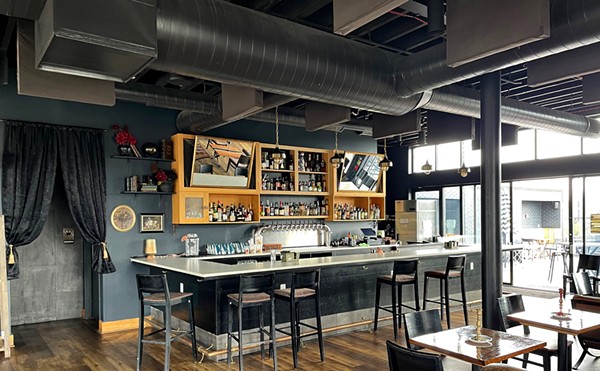The French apéritif and the Italian aperitivo are terms derived from the Latin word meaning "to open," as in "to open a meal" or "to open the stomach." Serving a similar purpose as the amuse bouche, the small, free bite from the kitchen that might kick off one's meal at a fine restaurant, apéritifs are alcoholic drinks meant to stimulate one's appetite and prime the senses for the meal to come. Champagne, vermouth spritzes, gin and tonics – even session beers — all can serve as apéritifs.
"Apéritifs are usually light, dry and easy drinking," notes Michael Flaherty, bar manager and instructor at EDWINS Leadership and Restaurant Institute. "Using French cuisine as an example, Champagne and fortified wines like Ratafia, Pineau des Charentes and Floc de Gascogne also tend to be very high in acid, which gets you salivating. Many apéritifs are infused with herbs, roots and botanicals that have long been thought to encourage appetite and digestive enzymes."
Let's pause for a moment and consider the implications of the apéritif. When was the last time you needed help getting hungry? I don't know about you, but food is all I think about when I'm not eating food. I salivate just walking by the free popcorn samples at the West Side Market. Why, when we were young, were we never told about this utopian European past, when our ancestors arrived at meals lacking even the most basic motivation to eat, only to then eat themselves into a gluttonous stupor that required post-meal digestifs to survive?
Common sense tells us that there's more to the story and, sure enough, there is: The apéritif really is a statement of one's intentions. It implies: "I'm here to eat, I'm here to enjoy myself and my company, and I'm in no hurry."
"Our chef Gilbert [Brenot]'s apéritif of choice is Pastis, an anise liqueur," Flaherty shares. "When he was growing up in France, it was what you drank while dinner was still being prepared in the kitchen and for several hours beforehand."
In Italy, it's common to spend an hour or two before dinner sitting in a café, sipping on Aperol spritzes and snacking on a light selection of canapes, nuts, olives and cured meats. "Food is necessary for life — it's held in the highest regard," adds Flaherty. "And so in traditional Western European culture, alcohol is very much about heightening one's enjoyment of food. The before-dinner drink is a segue to the meal from the events of the day."
The meals there are hours-long multi-course affairs where good wine plays a supporting role to food, friends and family. Contrast that with the American happy hour, which is a madcap dash to scarf free or discounted food and drink alongside people with whom we wouldn't choose to spend an entire evening.
"How we eat and drink is a reflection of how we live our lives," says Flaherty. Apéritif programs at restaurants like EDWINS, Flying Fig and Chinato have been generally well received, but American diners still have managed to put their own unique spin on the whole idea.
"People are receptive to the idea of a drink before dinner, a bottle of wine with dinner, and perhaps a dessert wine or some other digestif afterwards," Flaherty continues. But for many, that light, eminently drinkable apéritif has morphed into a giant, boozy martini. "Where can you really go from there?" he ponders.
Common Apéritifs
You can find these apéritifs anywhere wines are sold. The Market at the Fig is a great source for some of the more obscure entries, such as Bonal.
Sparkling Wines
Champagne and its Italian analog prosecco are ideal preludes to a meal: light, crisp and refreshing.
Vermouth
An Italian fortified wine infused with botanicals such as wormwood, which was thought to ward off intestinal parasites. Take your dry or sweet vermouth with soda water on ice.
Quinquinas and Americanos
A fortified wine containing quinine, a compound from chincona bark. Introduced in France in the 1840s as a malaria remedy, Dubonet is credited with formalizing the apéritif in French culture, followed by similarly produced wines like Lillet, Bonal and Byrrh. Quinquinas are called Americanos in Italy, where they're also made with gentian root. Cocchi Americano is a preeminent example.
Gin and Tonic
The British Navy began mixing tonic, a quinine-infused sweetened water, with lime and Naval-strength gin rations in the early 1900s.
Amari and Other Herbal Liqueurs
Typically taken as digestifs, bitter Italian liqueurs like Aperol and Fernet can become effervescent pre-dinner tipples with the addition of prosecco or soda water. Chartruese, a French liqueur infused with more than 130 botanicals, can benefit from the same treatment.
Addendum: Mary Sweeney was a contributor to this article. Grazie, Mary.









